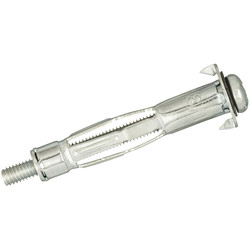Hi all,
I've got two long but narrow cupboards and I want to hang them one above the other on an internal plasterboard wall in the kitchen. The wall separates the kitchen and the living room and I suspect the wall is stud and plasterboard but I wasn't 100% sure where the studs were by tapping alone. I used a Magnusson detector to find the timber and it found it where I thought it was. But before I went drilling, I switched it to metal detection and it found metal in the same place as it found wood... sure enough, the copper heating pipes from the radiator in the living room come up right where the detector said the stud was.
How should I go about hanging these cupboards?
I was hoping to screw them to a stud as the stud will better support the weight. I'm tempted to knock a nail through the plasterboard to find the stud... but there's always the chance that I'll hit the pipes and put a hole in them.
So I'm wondering if I should just mount the cupboards on the plasterboard in several places to spread the load?
Maybe I should bite the bullet and cut out an inspection hole to get a good look in the void and figure out how best to locate and mount on the stud?
Any ideas, suggestions and inspiration much appreciated!!
Dave
I've got two long but narrow cupboards and I want to hang them one above the other on an internal plasterboard wall in the kitchen. The wall separates the kitchen and the living room and I suspect the wall is stud and plasterboard but I wasn't 100% sure where the studs were by tapping alone. I used a Magnusson detector to find the timber and it found it where I thought it was. But before I went drilling, I switched it to metal detection and it found metal in the same place as it found wood... sure enough, the copper heating pipes from the radiator in the living room come up right where the detector said the stud was.
How should I go about hanging these cupboards?
I was hoping to screw them to a stud as the stud will better support the weight. I'm tempted to knock a nail through the plasterboard to find the stud... but there's always the chance that I'll hit the pipes and put a hole in them.
So I'm wondering if I should just mount the cupboards on the plasterboard in several places to spread the load?
Maybe I should bite the bullet and cut out an inspection hole to get a good look in the void and figure out how best to locate and mount on the stud?
Any ideas, suggestions and inspiration much appreciated!!
Dave


